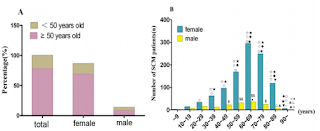Stress Cardio Myopathy (SCM), also called
Tako-tsubo cardiomyopathy, broken heart syndrome or apical ballooning syndrome,is commonly triggered by an acute strong physical or emotional stress. Its most
typical symptoms include acute, severe and complete heart dysfunction with
reversible favourable outcomes. As we all known, the cardiovascular disease is
still the leading cause of death.
But the SCM has a very low death rate
compared with acute coronary diseases or heart failure. So, in some situations,
it was considered that this reversible SCM may be a cardioprotective strategy,
to avoid heart failure diseases when emergency occurs. Despite the increasing
recognization of SCM, the precise pathophysiology of SCM remains unknown. Read more>>>>>>>




